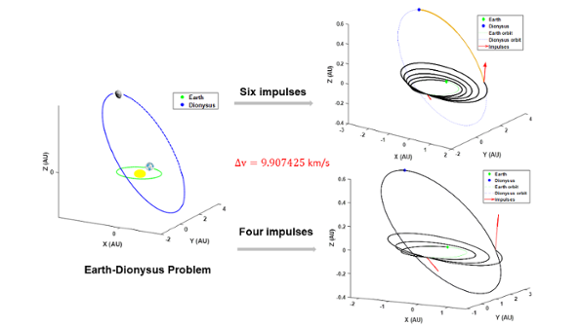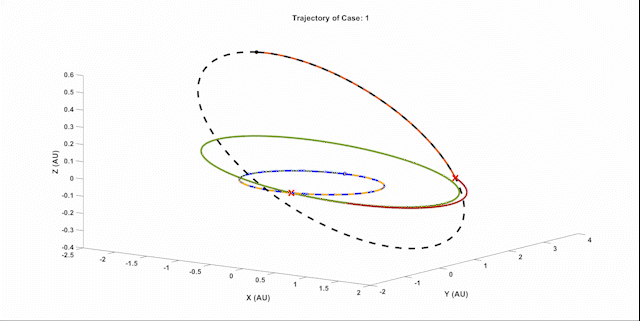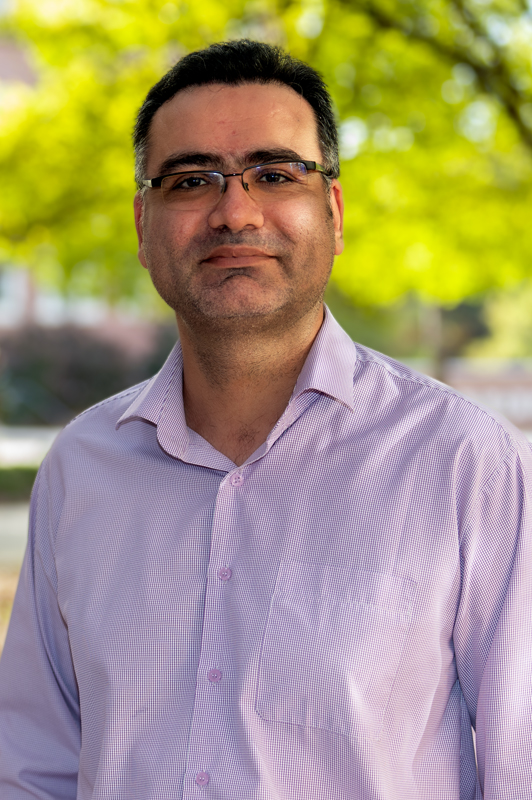Graduate student in aerospace engineering wins 2023 Breakwell Award
Published: Feb 10, 2023 1:20 PM
By Gracie Barranco
Keziban Saloglu, a doctoral candidate in aerospace engineering, was recently awarded the 2023 Breakwell Student Paper Award, a prestigious student prize in astrodynamics. Saloglu, now in her second year at Auburn, was presented the award at the Space Flight Mechanics Meeting Jan. 15-19 in Austin, Texas, hosted by the American Astronautical Society and cohosted by the AIAA (American Institute of Aeronautics and Astronautics).
Saloglu’s award-winning paper, “Existence of Infinitely Many Optimal Equal-∆v (Delta-V) Trajectories in Two-Body Dynamics,” shares a breakthrough method for spacecraft impulsive trajectory optimization.
Currently, spacecraft equipped with chemical propulsion systems exert impulses that create instantaneous change (Delta-V) in the spacecraft velocity. Saloglu’s research explored how many impulses are necessary to generate optimal trajectories in the sense of requiring the least amount of total Delta-V. Propellant is a valuable resource in space and maneuvers that require the least amount of total Delta-V constitute an important class of space maneuvers.
The problem of determining the optimal number of impulses required to perform a least Delta-V maneuver is a famous and fundamental question, posed by one of the pioneers of space trajectory optimization, Theodore N. Edelbaum, in a seminal 1967 paper titled “How many impulses?”

“Previously, my advisor, Dr. Ehsan Taheri, and his colleague investigated Edelbaum’s question and found out that there is no unique answer to this question for the general three-dimensional maneuvers in an inverse-square gravity field,” said Saloglu, an active participant in Taheri’s Aero-Astro Computational and Experimental (ACE) Lab. “For the problem of transferring a spacecraft from Earth to asteroid Dionysus over a fixed-time horizon which is a benchmark problem, Dr. Taheri showed that there exist, at least, four minimum Delta-V solutions with different numbers of impulses. A curious, and at the same time, surprising aspect of these four impulsive maneuvers was that they require the same total amount of Delta-V.”
The results of his research can be found here in a seminal journal paper.
“In the award-winning paper, we further investigated the intriguing features of those optimal solutions. Our results reveal the existence of infinitely many solutions with the same total instantaneous change in velocity. For the Earth-Dionysus benchmark problem, we also showed that all solutions can be classified to have a minimum of three up to a maximum of eight impulses with the same instantaneous velocity change. As we determine the lower and upper number of required impulses, we conclude that there is no unique answer to the “how many impulses?” question, but there is a lower and upper limit on the number of impulses.”

What is the significance of the results? Saloglu said more insight was gained into one of the open questions in the field of astrodynamics regarding the number of possible impulses and the research showed there can be “infinitely many equal-Delta-V solutions for fixed-time rendezvous-type problems.”
Possible real-life application of this research can impact thruster requirements in a spacecraft’s mission design phase. In fact, the total required impulses can be divided into smaller, intermediate impulses without the loss of optimality, but at the expense of making the maneuver to occur over a longer period. This ensures a craft’s trajectory is realizable by the thrusters.
Saloglu said Auburn Engineering’s aerospace program played a key role in developing her research skills.
“I had never before worked on optimal control problems or trajectory optimization at such a fundamental level,” she said. “Most of what I learned in these areas happened at Auburn. I was able to take classes like Optimal Control of Aerospace Vehicles and Advanced Trajectory Optimization and apply what I learned to my research.
“I would like to thank my advisor, Dr. Taheri, and my collaborator and co-author of the paper from the NASA’s Jet Propulsion Laboratory, Dr. Damon Landau. I would also like to thank Dr. Sonia Hernandez who headed the Breakwell Award Committee. It is a great feeling that I can contribute to the astrodynamics community through my research and to keep working on these fascinating problems.”
Taheri is “quite happy” with the results obtained in the team’s quest to answer one of the fundamental questions in the field of astrodynamics.
“These results are the outcomes of years of research. More importantly, I am extremely delighted to see Keziban receiving the recognition of her work. We have made more insights since the paper’s publication and we will publish the results in top journals in our field,” he said.
Media Contact: , jem0040@auburn.edu, 334.844.3447
Ehsan Taheri, assistant professor in aerospace engineering, and Keziban Saloglu


